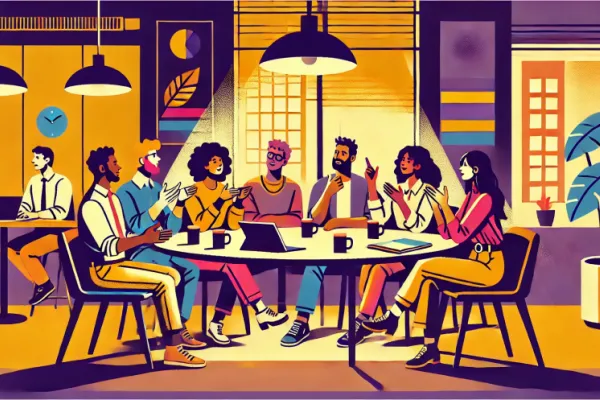
 Details
Details
King Arthur’s Round Table was circular to preserve equality in the court of Camelot.
But in the round-table discussions on Jury Summit, the opening day of the Native Advertising Days 2024, one topic outweighed the rest: Artificial Intelligence.
Reflecting on a breakout 12 months for the technology, it was fascinating to hear from native advertising experts how AI is changing the media landscape.
Winning over the opposition
Despite still having many limitations, AI has come on leaps and bounds since the beginning of 2023 – it’s fair to say its capabilities have won over legions of nay-sayers who feared it would result in lots of lost jobs.
This was best summed up by the oft-repeated adage of the day: “AI isn’t going to replace people, rather people using AI are going to replace people.”
All participants in the discussions agreed on this point, concluding that not using AI simply isn’t an option anymore, but perhaps there was less consensus over how best to use it.
Best used as a tool
So how do most companies regard AI, if they no longer see it as a threat? The most common response was “as a tool” – and many have used the technology to develop their own.
Bonnier News in Sweden uses its own tool for headlines, story angles and extracting articles from one solid ‘mother article’. Aptly, its tool for small tasks is called BonsAI.
Yaleo, a tool developed by Audienz AZ in Switzerland, goes far beyond content development and right to the heart of native advertising. It uses AI and crawling technology to produce high-quality native ads that fit seamlessly into an editorial context.
Or as a personal assistant
Another popular response was “as an assistant” – and certainly, it was notable how many times the company ‘Co-Pilot’, an apt job description, was cited as a reputable company.
Not only can AI assist content creators and writers, but it can play a support role in the office: arranging schedules, taking notes at meetings (particularly ones you’re late to) and other admin tasks.
Above all, though, its role as assistant underlines the fact that you, the human, remain in charge.
Saves time, raises margins
When it came to what are the biggest opportunities that AI brings to media houses, again there were two equally popular answers.
The first was saving time: particularly for content ideation, research and story outlines. As Tina Edquist from Axel Springer noted, it frees us from all the mundane tasks, “so all our jobs become so much more interesting”.
And the second was margins: it can add those fractions of a percent, or the smallest details, which really make a difference.
Brilliance across the board
Clearly AI is having a stellar year, and participants in the round-tables were quick to share examples of brilliance they might not have anticipated at the end of 2022:
- Tailoring a ‘mother article’ to fit the voice of multiple publications or specific interests of regions
- Collating indigestible content (for example, lengthy company reports) to create easy-to-consume subject-specific summaries or native advertising articles
- Translating transcripts or even audio – in one case to lip-sync a Liverpudlian speaking Mandarin with a Scouse accent!
As one participant put it: “Let’s keep the people, but become more excellent.”